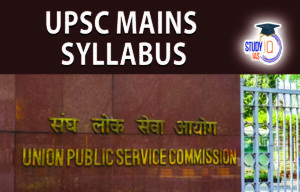Table of Contents
Introduction
You can start by stating that private healthcare, accounts for around 70% of healthcare utilization in the country→ increasing marketization of healthcare, with an over-reliance on private providers, has raised concerns about access, affordability, and equity.
Body
Adverse impact of marketization of the healthcare System
- Inequity in Access:
-
-
- Creates a dual healthcare system: Wealthy populations access quality care, while the poor rely on underfunded public healthcare.
- Rural-urban divide: Healthcare infrastructure is concentrated in urban areas, leaving rural areas underserved.
- Only 30% of healthcare infrastructure serves 70% of the rural population.
-
- Rising Costs and Affordability: Medical poverty—families falling below the poverty line due to high healthcare expenses.
-
-
- 48.8% of total healthcare spending in India is out-of-pocket expenditure (National Health Accounts 2019-2020).
-
- Neglect of Public Healthcare: Over-reliance on private healthcare has led to underfunding and neglect of public health systems→Public hospitals are overcrowded and under-resourced.
- Commodification of Healthcare: Healthcare becomes a commodity driven by profit motives, leading to unnecessary procedures.
- Case: Paschim Banga Khet Mazdoor Samity v. State of West Bengal (1996) – Supreme Court emphasized the state’s responsibility to provide healthcare.
- Erosion of Ethical Standards: unethical practices like overcharging, unnecessary procedures, and high pharmaceutical markups.
- Limited Focus on Preventive Care: Market-driven systems prioritize curative care over preventive measures, leading to under-investment in public health.
Measures to enhance the reach of public healthcare at the grassroots level
- More financing: Target of increasing public health expenditure to 2.5% of GDP by 2025 under the National Health Policy 2017.
- Decentralization of management and financing of healthcare services to local governments allows for more targeted and efficient delivery of services.
- Strengthening Infrastructure and Scope: Increase number of PHCs, CHCs, HSCs; e.g., increase scope through schemes like Ayushman Arogya Mandir,
- According to the Rural Health Statistics 2021, Each SC catered to an average of 5691 people, each PHC to 36049 people and each CHC to 164027 people.
- Increasing Healthcare Workforce: Recruit, train healthcare workers, ASHA, address doctor shortages.
- As per Rural Health Statistics 2021, India is reeling under an acute shortage of specialist doctors, with a shortfall of nearly 80% of the required specialists at CHCs
- Telemedicine and Digital Health Initiatives: e-Sanjeevani, health records, Ayushman Bharat Digital Mission
- Affordable Healthcare: Jan Aushadhi, Ayushman Bharat, generic medicines.
- Expanding Preventive Care: Vaccination, hygiene, sanitation, Poshan Abhiyaan.
Conclusion
- You can highlight Article 47 of the Directive Principles of State Policy places the duty on the State to improve public health and nutrition.
- Addressing adverse impacts of marketization of the system requires stronger public healthcare systems and policies that prioritize equity and universal access→ Best practice., Kerala Model: Decentralized, primary care focus, grassroots.
| Related Post | |
| UPSC Mains GS 1 Question Paper 2024 | UPSC Mains GS 1 Analysis 2024 |
| UPSC Mains Essay Question Paper 2024 | UPSC Mains Essay Analysis 2024 |
| UPSC Mains GS 2 Question Paper 2024 | |


 NCERT Books for UPSC Preparation, Check ...
NCERT Books for UPSC Preparation, Check ...
 UPSC Syllabus 2025, Check UPSC CSE Sylla...
UPSC Syllabus 2025, Check UPSC CSE Sylla...
 UPSC Mains Syllabus 2025, Optional Sylla...
UPSC Mains Syllabus 2025, Optional Sylla...





















